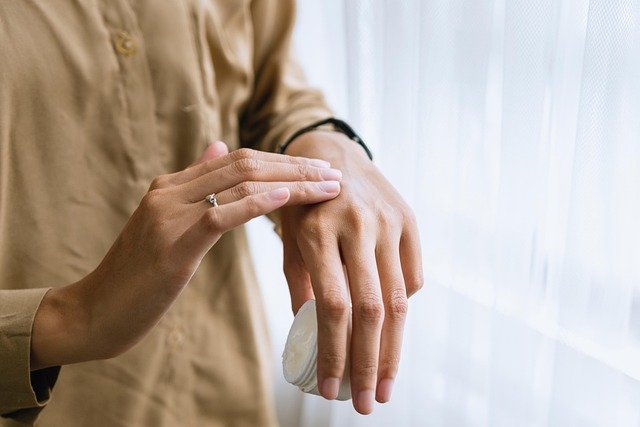Daily care routines by hair type: balancing cleanse and hydration
Effective daily care balances cleansing and hydration tailored to each hair type. This overview explains how to adjust frequency, choose products, and combine lifestyle factors like exercise and posture with scalp-focused care. It highlights safe uses of ingredients such as coconut oil, notes when to seek a clinic or professional assessment, and connects scalp care with broader skin and rejuvenation concerns.

Daily hair care requires a thoughtful balance between cleansing to remove buildup and preserving hydration to maintain strand elasticity and scalp comfort. Different hair types—oily, fine, dry, curly, or mature—need distinct approaches to wash frequency, choice of product, and conditioning strategies. This article outlines practical routines by hair type, considers lifestyle influences such as exercise and posture, and points to when a clinic or a professional therapist might be helpful.
How does hair type affect cleanse and hydration?
Different hair textures change how water and products behave. Fine or straight hair often shows oil quickly and benefits from more frequent cleansing with lightweight formulas, while coarse, curly, or chemically treated hair loses moisture faster and needs richer conditioners. Science supports matching surfactant strength and humectant content to hair porosity: lower-foaming cleansers with glycerin or lightweight oils preserve hydration, whereas stronger detergents remove heavier styling products. Consider product labels and test sensation: scalp that feels tight after washing likely needs a gentler cleanser or less frequent shampooing.
Oily or fine hair: can coconut oil help?
Oily scalps and fine hair usually need frequent, targeted cleansing to avoid limpness. Coconut oil can condition hair but may be too heavy for these types if left on the scalp; as a pre-wash treatment applied to lengths (not roots) it can reduce protein loss in some hair. Use lightweight, clarifying formulations sparingly and follow with a conditioner focused on mid-lengths to ends. For athletes or people who exercise daily, rinse with a mild cleanser after heavy sweat sessions to reduce buildup while avoiding over-stripping the scalp.
Dry, curly, or mature hair: strategies for hydration
Curly and dry hair types, and hair of people with mature skin, benefit from less frequent shampooing and more emphasis on conditioning and targeted oils or emollients. Emollients and humectants—such as plant oils and glycerin—help retain moisture, while occlusives seal hydration. Avoid high-alkaline products that can increase cuticle lift. If using scalp-focused topical products, be mindful that treatments intended for facial rejuvenation, such as retinol, are for skin and may not suit the scalp; consult a professional before adapting facial products for scalp use.
Scalp health: when to see a clinic or professional
Persistent itching, flaking, sudden shedding, or pain merit evaluation at a clinic or by a licensed professional. A dermatologist, trichologist, or a therapist trained in scalp care can assess underlying skin conditions related to aging skin or other dermatologic issues. In cities such as Detroit and elsewhere, look for clinics offering scalp assessments that consider both skin science and lifestyle factors. A professional can recommend medicated shampoos, targeted serums, or procedural options when home routines don’t resolve concerns.
Lifestyle links: athlete, exercise, biomechanics and movement
Daily movement, exercise intensity, and even posture can indirectly affect scalp health. Athletes who sweat heavily may need more frequent rinsing to prevent salt and product buildup. Biomechanics and posture influence how hair lies and where friction occurs—collars, sports equipment, or repetitive movement patterns can increase tangles and breakage. Simple adjustments, like loosening a helmet strap or altering a ponytail placement, reduce mechanical stress. Overall care should blend cleansing to remove sweat with hydration strategies that restore pliability to strands.
Integrating products into a care and skincare routine
Choose products based on hair type and scalp needs rather than trends. A basic routine includes a suitable cleanser, a conditioner or mask, and a lightweight leave-in for moisture. Products marketed for facial rejuvenation, such as those containing retinol, are designed for skin and generally not intended for scalp use; consult both product science and a professional before repurposing facial items. For those seeking natural options, coconut oil can be part of a pre-wash regimen for lengths, while clinical-strength products may be advised for specific scalp conditions. Keep a consistent skincare routine for the face and a parallel, tailored regimen for the scalp and hair.
This article is for informational purposes only and should not be considered medical advice. Please consult a qualified healthcare professional for personalized guidance and treatment.
Daily routines that respect both cleansing and hydration needs reduce breakage, manage oiliness, and support scalp comfort over time. By aligning product choice, wash frequency, and lifestyle habits—including exercise, movement, and posture—you can create a sustainable approach that fits your hair type. When in doubt, seek a professional assessment to match interventions to the science of skin and hair health.





